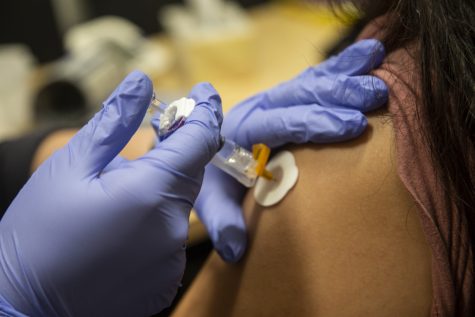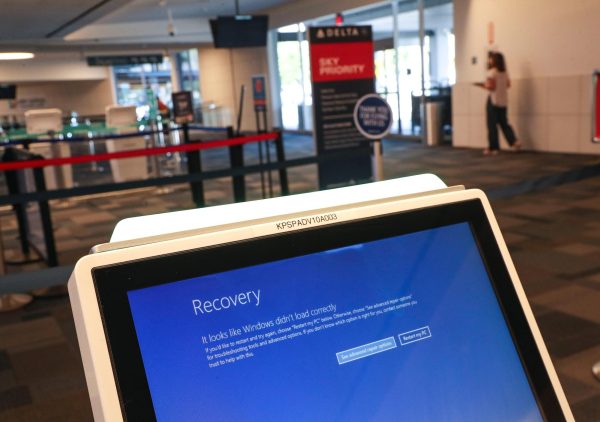National Advanced Driving Simulator awarded $1.45 million to further research on automated vehicles
The University of Iowa research program will use the funds to continue researching aspects of transition control in automated vehicles.
Justin Torner - Staff Photograph
Photo of the NADS simulator. Contributed.
October 25, 2020
As automated driving technology becomes more prevalent, experts with the National Advanced Driving Simulator at the University of Iowa are studying how long it takes human drivers to take over control of an automated system.
The National Advanced Driving Simulator was awarded $1.45 million from the National Highway Safety Administration through the U.S. Department of Transportation to further study the transition control in automated vehicles within a simulation.
Leader of the Human Factors Research Group at the simulator John Gaspar said the National Advanced Driving Simulator is a research center within the College of Engineering that studies the relationship between humans and vehicle technology and how to make that relationship safer.
Transition control allows the human to take back control from the automation vehicle, Gaspar said. In some vehicles, Gaspar said, there are features that allow the vehicle to perform parts of driving tasks under certain conditions like traffic jams.
The organization is researching the amount of time it takes vehicle automation to warn the driver that they need to take control, and the amount of time it takes the human to disengage what they’re doing and become completely aware of the state of automation.
RELATED: UI program teams up with Iowa DOT and Iowa State University for driverless vehicles
Director of the National Advanced Driving Simulator Daniel McGehee, who is also an associate professor of industrial and system engineering, said everyone drives differently and has different reaction times, so it is critical to understand this research so it can be safely implemented in automation vehicles.
“Human drivers are really one of the most important transitionary issues before these vehicles become fully automated,” McGehee said.
Gaspar said it can take 15 to 20 seconds for people to transition back to controlling the vehicle, and the main objective of this project is to understand the transition process between the automation vehicle and humans in order to make it safer and to understand the ultimate response of humans.
Because the vehicle will take partial control, McGehee said it is important to understand how the time frame of a few seconds affects the human ability to regain control.
“The simulator has very large motion capabilities … so we can replicate, with fairly high degree of precision, the emotion you’re actually feeling when you drive a real vehicle,” Gaspar said.
Research Assistant at the simulator Timothy Brown said drivers are currently in an environment where they have full control over the vehicle.
RELATED: UI wins award for vehicle-safety announcement
“The aim at the end is to get vehicles that are fully automated and don’t require intervention by humans,” Brown said.
UI Ph.D. student Emily Shull, who is studying Industrial and Systems Engineering, said the human that’s driving in this scenario will not understand what’s happening without knowledge of this study, which could potentially cause many crashes.
Shull said she did her undergraduate work at the UI in psychology. As part of the current team, she said she researched the understanding of the limitations of human memory and cognitive processing.
“I think I can really make the human’s role in automated driving more pronounced by trying to investigate the importance and what goes into the human attention, behavior, performance and our general interaction with automated technology,” she said.




















